Our Company and Methodology
BookShark is a complete, literature-based, homeschool curriculum. Our curriculum uses a variety of educational resources including literary fiction and nonfiction, biographies, illustrations and hands-on experiments to deliver an engaging and complete education that extends beyond textbook memorization.
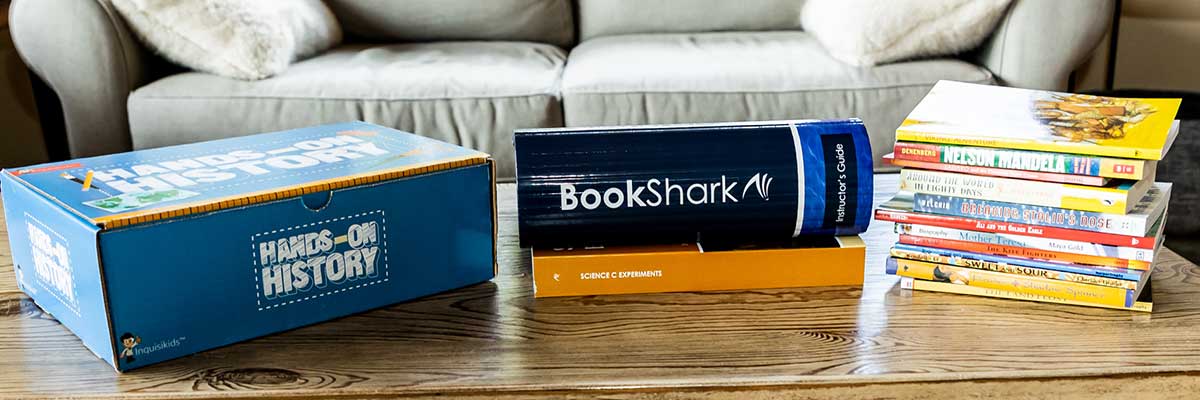

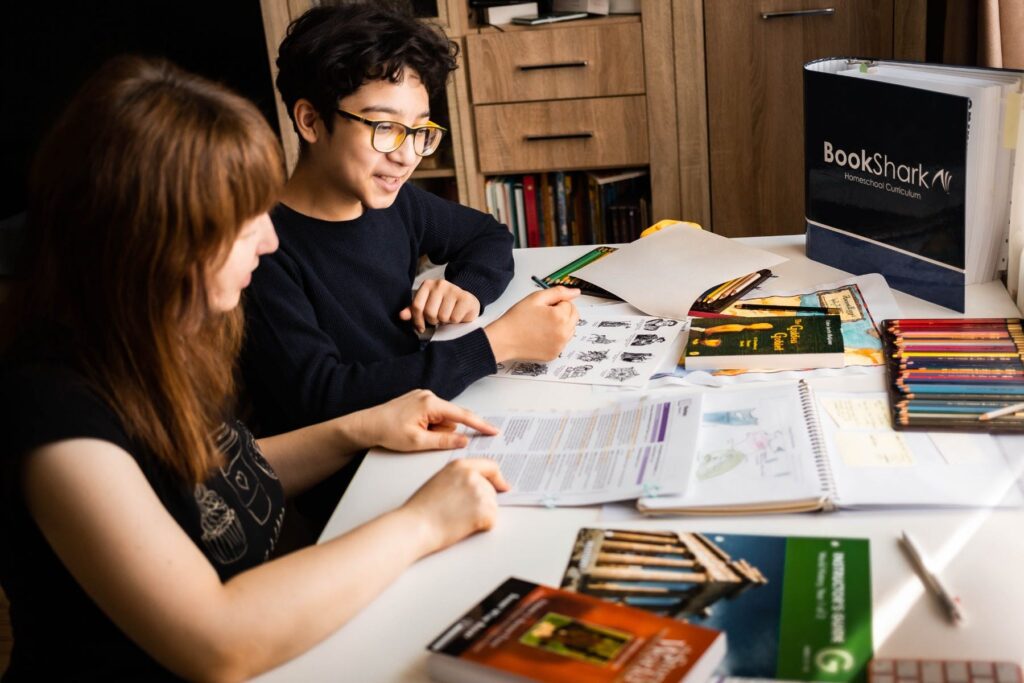
Our curriculum is easy for parents to teach. All of the planning and preparation is done for you so you can enjoy learning together. We provide 36-week, 4-day schedules designed to save one day a week for sports, field trips or other extracurricular activities.
BookShark combines a proprietary History, Science and Language Arts offering with a wide range of math options, including Math-U-See, Saxon, Singapore, and more to ensure you have everything you need for an entire school year.
Levels, Not Grades
BookShark uses levels based on age ranges instead of a rigid grade system. We use flexible levels because kids mature at different rates. When you choose a homeschool curriculum to match your children (instead of forcing them into a particular grade level), they can blossom at their own natural pace!
Another perk of levels instead of grades–if your children are within in three years of age, you’ll be able to combine them in a single Reading with History program and customize the Math and Language Arts according to their level. (Read more in the Guide to Choosing.)
Instructor’s Guides Make it Easy to Teach
Thanks to the Instructor’s Guides (IGs), BookShark curriculum is easy for parents to teach. All of the planning and preparation is done for you so you can enjoy learning together. Every program is scheduled for 4 days each week, leaving your fifth day for sports, field trips, co-op, or other extracurricular activities.
Once you understand the flow of your IG, your weekly Sunday night preparation will be a breeze. Many moms simply open and go on Monday morning because they don’t even need any Sunday night prep. (See IG samples here.)

History
Through BookShark’s Reading with History program, students learn from multiple perspectives and engage in thought-provoking discussion. We use a variety of academic resources including fictional and non-fictional literature, biographies and illustrative books to deliver an engaging and complete education.
Starting in Level D, we bring the history content to life by integrating History, Geography, Read-Alouds and Readers, all of which also coordinates with the same level Language Arts program.
Through BookShark’s integrated curriculum, your child will make impactful and lasting connections between the people, places and events they learn about through vivid stories and engaging discussion.
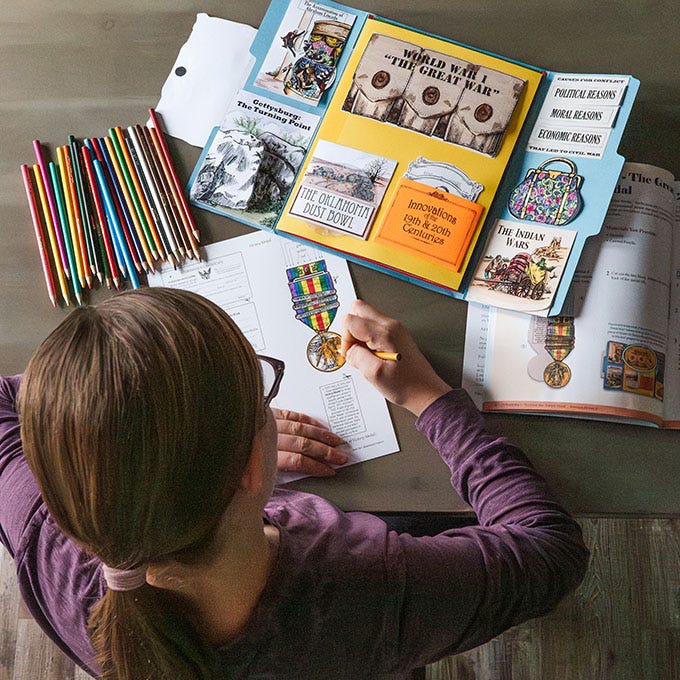
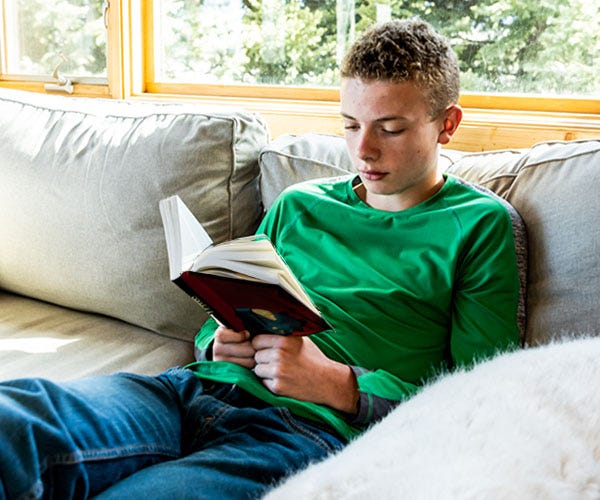
Language Arts
BookShark Language Arts teaches reading, phonics, spelling, copywork, creative expression and writing mechanics.
We made a substantial investment in our Language Arts program in 2014. Complete with weekly overviews, teacher scripts and rubrics, you will know exactly what you are teaching and how to teach it. And with weekly rubrics, you will have confidence that your students are mastering concepts as they progress through the school year.
We encourage families to combine multiple students into one Reading with History program, so we offer five levels of Language Arts to to be used with our Level A through C Reading with History programs. This provides you the flexibility to teach History to multiple children while customizing Language Arts to each child’s reading and writing level.
Starting in Level D, our Language Arts program integrates directly with the Reading with History program. For example, a student studying Thomas Jefferson in History, will also read a biography about Thomas Jefferson as a Reader assignment while writing an editorial about the Lewis and Clark expedition.
Science
Levels A through F Science programs have been redesigned for 2021 with NGSS Standards in mind.
Our NEW programs combine BookShark’s signature, literature-based approach of learning content with books using the standards-based approach of learning through application. Students read from a collection of science books throughout the week, then apply that knowledge through a weekly experiment. The experiments that the student through the critical thinking process of making predictions, testing, analyzing and the Engineering process.


Math
BookShark offers multiple options for parents and homeschool students to select as their Math curriculum.
For Grades 9-12, parents can choose from:
- Math-U-See
- Singapore
- Saxon
For Grades K-8,
- Math-U-See
- Saxon
- RightStart Math
Each highly respected curriculum encourages students to develop solid math reasoning skills and apply them to real-life situations.
Spelling
Spelling is interwoven into the Language Arts Guides in Level A through Level D.
Beginning in Level D, BookShark includes Spelling You See as part of the All-Subject Packages. This curriculum takes the approach that students spell correctly when words are imprinted on the visual memory. We also offer All About Spelling.
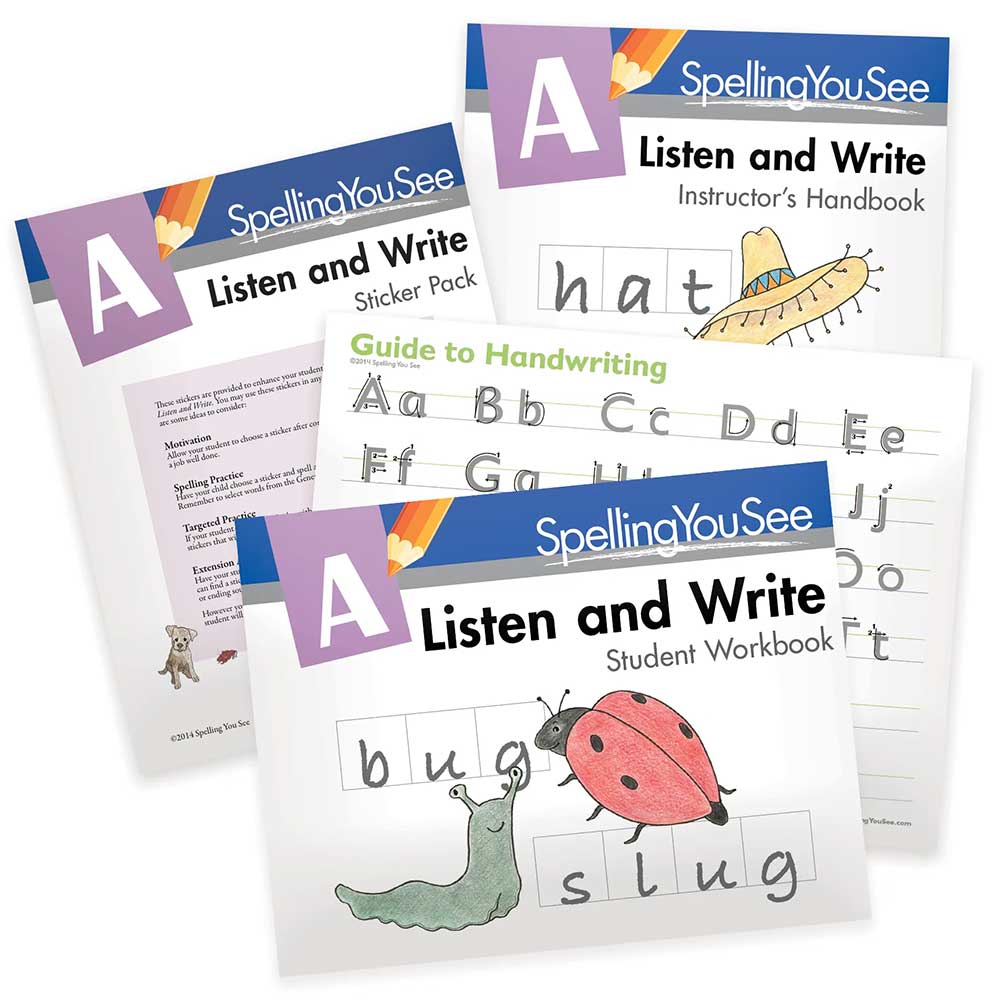
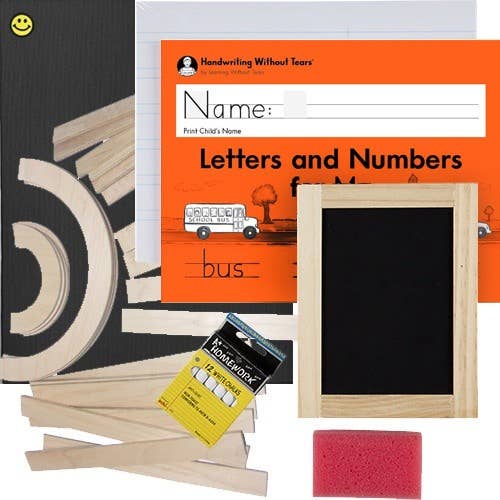
Handwriting
BookShark believes that writing by hand enhances fine motor and creative writing skills. Developed by a registered occupational therapist, the Handwriting Without Tears workbook is a developmentally-based handwriting program. The easy-to-teach, easy-to-learn curriculum makes learning to write a joy for students and parents. Available for all skill levels from printing to cursive.